When a professional reserve analyst develops recommended funding models for a common interest community like Home Owner’s Associations, Condominiums and Cooperatives National Reserve Study Standards are taken into account. There are four basic funding principles in outlined in these standards:
1. There will be adequate funds in the reserve account when needed
The recommended funding models will take into account that some years will have dramatically higher expenses than others (often referred to as Peak or Threshold Years). The recommended funding model should result in a reserve account balance which is large enough to cover expenses in all periods of time covered in the reserve study. There is little need for funding models which result in an Association’s failure to meet its fiscal responsibility to the membership. Adequately implementing a funding model developed by a Reserve Specialist will result in lower risk for reliance on special assessments, deferring projects and help to maintain or elevate marketability.
2. The budget should remain stable across years of changing membership and Boards
Costs related to common areas fluctuate widely from one year to the next, sometimes with minimal expenses for a decade or longer. The Reserve Specialist will develop a recommended funding model that fairly assesses reserve contribution dues while still remaining stable; requiring membership to pay their fair share over time. Often an allocation rate increase that matches the inflation rate is adequate and is a “stable” amount to increase to an annual rate. Note that this stable budget concept does not mean there should be no increases to the allocation rate; in fact the exact opposite is true. A stable increase of 3% per year follows this concept while wide variances such as 3% one year and 10% the next is not fair to the membership in either year. Typically we have found that community members are much more accepting of a model that projects stable and steady increases over time over a funding model with large increases every so often. Again it comes down to fairness and spreading out the costs as fairly as possible while taking into account inflationary factors.
3. The costs are fairly distributed to the membership (current and future members)
The recommended funding model should have project expenses that are fairly distributed across years of membership in a community (current and future members). An adequate reserve allocation rate to the reserve account on an annual basis ensures the community members are paying their fair share of the deterioration of the components. The costs may fluctuate wildly over a 30 year period but if the reserve study is updated annually the Association will be able to assess a fair amount to the membership in any given year and be adequately prepared for the common area replacement expenses when they come up. Years of high inflation may result in a recommended funding model where the allocation rate is also higher than previous years.
4. The recommended funding model must allow the Association / Board to be fiscally responsible
The membership of a community is counting on the Board to make good long term budgeting decisions. A recommended funding model which, say, removed reserve funds to pay for a large capital improvement (e.g. construction of a recreation building )is not a fiscally responsible decision and does not follow the concepts in the National Reserve Study Standards. A Reserve Specialist will develop a funding model which the Board can rely on and implement; the result is a community which stands on solid financial ground and a Board which is making fiscally responsible decisions.
Additional Resources: Reserve Study Guidebook / Reserve Budgeting - One Day or Day One





